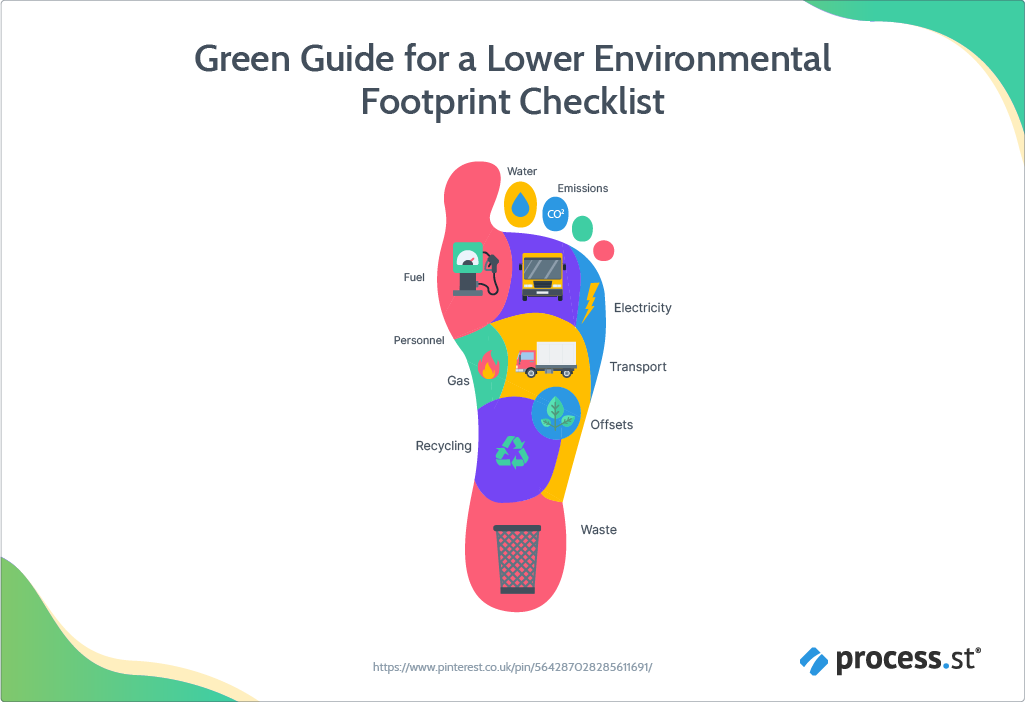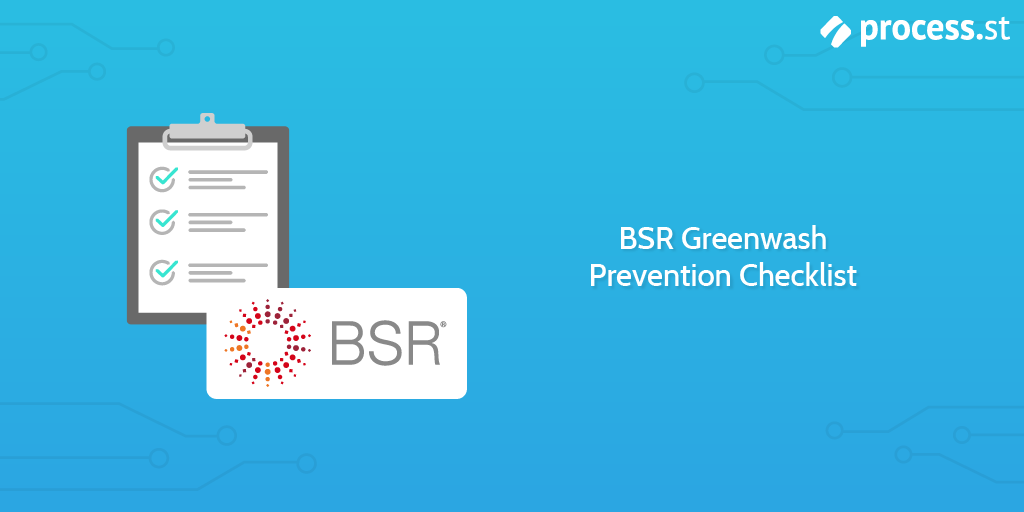Audit completed by: {{form.Auditor_first_name}} {{form.Auditor_second_name}}
Commencing: {{form.Start_date}}
Scope
EMS scope:
Scope of EMS: {{form.Scope_of_EMS}}
Scope being assessed for certification: {{form.Scope_being_assessed_for_certification}}
Scope includes environmental aspects out of company's control: {{form.Scope_includes_environmental_aspects_out_of_company's_control?}}
Scope adequately defined within EMS documentation: {{form.Scope_adequately_defined_within_EMS_documentation?}}
Additional processes excluded from scope: {{form.Additional_processes_excluded_from_scope}}
Reasons for exclusion: {{form.Reasons_for_exclusion}}
Comments on EMS scope: {{form.Comments_on_EMS_scope}}
Environmental policy
Definition of environmental policy:
Policy consistent with EMS scope: {{form.Policy_consistent_with_EMS_scope?}}
Policy appropriate to the nature of company activities: {{form.Policy_appropriate_to_the_nature_of_company_activities?}}
How is policy committed to continuous improvement: {{form.How_is_policy_committed_to_continuous_improvement?}}
How is policy committed to prevention of pollution: {{form.How_is_policy_committed_to_prevention_of_pollution?}}
How is policy committed to comply with relevant environmental legislation: {{form.How_is_policy_committed_to_comply_with_relevant_environmental_legislation?}}
How are environmental objectives and targets set and reviewed: {{form.How_are_environmental_objectives_and_targets_set_and_reviewed?}}
How is the policy documented: {{form.How_is_the_policy_documented?}}
How is policy available to the relevant interested parties: {{form.How_is_policy_available_to_the_relevant_interested_parties?}}
Plan
Environmental aspects of planning:
Inclusive of planned or new developments: {{form.Inclusive_of_planned_or_new_developments?}}
How is the extent of environmental impact assessed: {{form.How_is_the_extent_of_environmental_impact_assessed?}}
Assessments of environmental impacts documented: {{form.Assessments_of_environmental_impacts_documented?}}
How are environmental impacts documented: {{form.How_are_environmental_impacts_documented?}}
Procedure for assessing environmental aspects maintained: {{form.Procedure_for_assessing_environmental_aspects_maintained?}}
Legal and regulatory requirements:
Process exists for identifying and implementing regulatory requirements: {{form.Process_exists_for_identifying_and_implementing_regulatory_requirements?}}
Outline procedure for identifying/implementing regulatory requirements: {{form.Outline_procedure_for_identifying/implementing_regulatory_requirements}}
How is regulatory identification/implementation process maintained: {{form.How_is_regulatory_identification/implementation_process_maintained?}}
Environmental aspects considered when identifying regulatory requirements: {{form.Environmental_aspects_considered_when_identifying_regulatory_requirements?}}
{{form.Regulatory_requirements_considered_when_designing,_implementing,_and_maintaining_EMS?}}:
Person responsible for identifying and determining impact of regulatory requirements competent: {{form.Person_responsible_for_identifying_and_determining_impact_of_regulatory_requirements_competent?}}
Objectives, targets, and strategies:
Environmental objectives and targets established: {{form.Environmental_objectives_and_targets_established?}}
Environmental objectives and targets implemented: {{form.Environmental_objectives_and_targets_implemented?}}
Environmental objectives and targets maintained: {{form.Environmental_objectives_and_targets_maintained?}}
Have these been established at relevant functions and levels within the organization: {{form.Have_these_been_established_at_relevant_functions_and_levels_within_the_organization?}}
Strategy established for reaching objectives: {{form.Strategy_established_for_reaching_objectives?}}
Comments on strategic establishment: {{form.Comments_on_strategic_establishment}}
Strategy implemented for reaching objectives: {{form.Strategy_implemented_for_reaching_objectives?}}
Strategy maintained for reaching objectives: {{form.Strategy_maintained_for_reaching_objectives?}}
Comments on strategic maintenance: {{form.Comments_on_strategic_maintenance}}
How are legal and other requirements considered: {{form.How_are_legal_and_other_requirements_considered?}}
How are significant environmental aspects considered: {{form.How_are_significant_environmental_aspects_considered?}}
How are technological options considered: {{form.How_are_technological_options_considered?}}
How are financial, operational, and business requiremnets options considered: {{form.How_are_financial,_operational,_and_business_requiremnets_options_considered?}}
How are the views of interested parties considered: {{form.How_are_the_views_of_interested_parties_considered?}}
Who is responsible for implementing which strategies: {{form.Who_is_responsible_for_implementing_which_strategies?}}
What are the means of achieving different objectives: {{form.What_are_the_means_of_achieving_different_objectives?}}
What are the timeframes of achieving different objectives: {{form.What_are_the_timeframes_of_achieving_different_objectives?}}
How does the organization ensure that strategies are updated as a result of new developments: {{form.How_does_the_organization_ensure_that_strategies_are_updated_as_a_result_of_new_developments?}}
Do
Resources, roles, responsibility, and authority:
How are roles, responsibility and authorities defined, documented and communicated: {{form.How_are_roles,_responsibility_and_authorities_defined,_documented_and_communicated?}}
How does management determine allocation of resources: {{form.How_does_management_determine_allocation_of_resources?}}
Has a specific management representative for the EMS been assigned: {{form.Has_a_specific_management_representative_for_the_EMS_been_assigned?}}
Comments on EMS representative: {{form.Comments_on_EMS_representative}}
Competence, training, and awareness:
How is worker competence assessed: {{form.How_is_worker_competence_assessed?}}
Has the organization retained competency records: {{form.Has_the_organization_retained_competency_records?}}
How does the organization identify training requirements for the EMS: {{form.How_does_the_organization_identify_training_requirements_for_the_EMS?}}
Has training been delivered, and associated records retained: {{form.Has_training_been_delivered,_and_associated_records_retained?}}
Comments on worker competency, training, and awareness: {{form.Comments_on_worker_awareness}}
Communication:
Are environmental aspects communicated externally: {{form.Are_environmental_aspects_communicated_externally?}}
Has this decision been documented: {{form.Has_this_decision_been_documented?}}
Has the method of communication of environmental aspects been standardized: {{form.Has_the_method_of_communication_of_environmental_aspects_been_standardized?}}
Comments on EMS communication: {{form.Comments_on_EMS_communication}}
Documentation systems:
How is the documentation system maintained: {{form.How_is_the_documentation_system_maintained?}}
Comments on the documentation system(s): {{form.Comments_on_the_documentation_system(s)}}
Control of documents:
Is there a standardized procedure for controlling all documents in the EMS: {{form.Is_there_a_standardized_procedure_for_controlling_all_documents_in_the_EMS?}}
Comments on control of documents: {{form.Comments_on_control_of_documents}}
Operational control:
How are operations identified and planned in the context of the EMS: {{form.How_are_operations_identified_and_planned_in_the_context_of_the_EMS?}}
Comments on operational control: {{form.Comments_on_operational_control}}
Emergency preparedness and response:
Does a procedure exist for identifying potential emergency situations: {{form.Does_a_procedure_exist_for_identifying_potential_emergency_situations?}}
Are environmental aspects considered in the emergency preparedness and response procedure(s): {{form.Are_environmental_aspects_considered_in_the_emergency_preparedness_and_response_procedure(s)?}}
Does the procedure(s) cover how the organization will respond to these situations: {{form.Does_the_procedure(s)_cover_how_the_organization_will_respond_to_these_situations?}}
How do these procedures account for adverse environmental impacts of emergency situations: {{form.How_do_these_procedures_account_for_adverse_environmental_impacts_of_emergency_situations?}}
How are emergency preparedness and response procedures reviewed: {{form.How_are_emergency_preparedness_and_response_procedures_reviewed?}}
Are these procedures periodically tested: {{form.Are_these_procedures_periodically_tested?}}
Comments on emergency preparedness and response: {{form.Comments_on_emergency_preparedness_and_response}}
Check/Study
Monitoring and measurements:
Is there a procedure(s) to monitor and measure environmental impacts: {{form.Is_there_a_procedure(s)_to_monitor_and_measure_environmental_impacts?}}
How is monitoring and measuring equipment calibrated, verified, and maintained: {{form.How_is_monitoring_and_measuring_equipment_calibrated,_verified,_and_maintained?}}
Are calibration or verification records retained: {{form.Are_calibration_or_verification_records_retained?}}
Comments on monitoring and measurements: {{form.Comments_on_monitoring_and_measurements}}
Compliance:
Does the organization have a procedure(s) for compliance evaluation: {{form.Does_the_organization_have_a_procedure(s)_for_compliance_evaluation?}}
Are the records of the results of these periodic evaluations maintained: {{form.Are_the_records_of_the_results_of_these_periodic_evaluations_maintained?}}
Comments on compliance: {{form.Comments_on_compliance}}
Non-conformity, corrective, and preventative action:
Are the responsibilities and authorities for this process defined: {{form.Are_the_responsibilities_and_authorities_for_this_process_defined?}}
How is the procedure updated: {{form.How_is_the_procedure_updated?}}
How are decisions made regarding action taken to eliminate causes of non-conformity, etc: {{form.How_are_decisions_made_regarding_action_taken_to_eliminate_causes_of_non-conformity,_etc?}}
How are changes such as corrective and preventative action documented in the EMS: {{form.How_are_changes_such_as_corrective_and_preventative_action_documented_in_the_EMS?}}
Comments on non-conformity, corrective, and preventative action: {{form.Comments_on_non-conformity,_corrective,_and_preventative_action}}
Control of records:
Is there a standardized process for updating environmental records: {{form.Is_there_a_standardized_process_for_updating_environmental_records?}}
How are environmental records updated and disposed of: {{form.How_are_environmental_records_updated_and_disposed_of?}}
Are the records legible, identifiable and traceable: {{form.Are_the_records_legible,_identifiable_and_traceable?}}
How are environmental records stored: {{form.How_are_environmental_records_stored?}}
Comments on control of records: {{form.Comments_on_control_of_records}}
Procedures for internal audit:
Is there a standardized process for internal audits: {{form.Is_there_a_standardized_process_for_internal_audits?}}
How are previous audits integrated into current strategies: {{form.How_are_previous_audits_integrated_into_current_strategies?}}
How does the organization provide information on the results of audits to management: {{form.How_does_the_organization_provide_information_on_the_results_of_audits_to_management?}}
How are auditors selected in an objective and impartial manner: {{form.How_are_auditors_selected_in_an_objective_and_impartial_manner?}}
How is auditor competency determined: {{form.How_is_auditor_competency_determined?}}
Comments on internal audit procedures: {{form.Comments_on_internal_audit_procedures}}
Act
Management review:
Is the EMS regularly reviewed by management: {{form.Is_the_EMS_regularly_reviewed_by_management?}}
Does the review include assessing opportunities for improvement: {{form.Does_the_review_include_assessing_opportunities_for_improvement?}}
Are the records of the management reviews retained: {{form.Are_the_records_of_the_management_reviews_retained?}}
Comments on management review: {{form.Comments_on_management_review}}
Audit overview:
Describe the maturity level of the organization: {{form.Describe_the_maturity_level_of_the_organization}}
Identify the strengths of the organization: {{form.Identify_the_strengths_of_the_organization}}
Identify the areas for improvement based on maturity scores: {{form.Identify_the_areas_for_improvement_based_on_maturity_scores}}
Recommendations summary: {{form.Recommendations_summary}}







